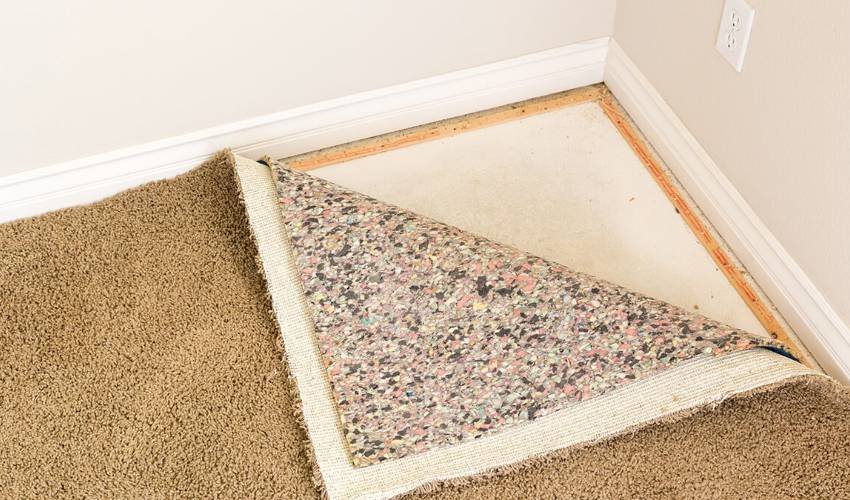Carpet is one of the most excellent floor covering materials and comes in a variety of colors, textures, patterns, and sizes. Carpets gain dominance over other flooring materials when it comes to comfort and warmth. Besides, carpet padding also provides various other benefits, such as insulation and acoustic protection. However, to get maximum comfort and warmth from a carpet, utilizing padding or backing material is necessary.
In this instructive blog, Dubai Artificial Grass will guide you about appropriate carpet padding thicknesses. By considering these key factors, you will be able to choose the best padding material for your carpets.
Carpet Padding Thickness Guide
Carpet padding is an underlay that is used to enhance the softness, durability, and life of carpet. To choose a heavy-duty padding material, you should consider its thickness, weight, density, and R-value.
Padding Thickness
For each type of carpet, you will require a specific padding thickness because not all thickness levels are compatible with all carpets. For both residential and commercial places, you’ll need to consider different thicknesses as per carpet requirements.
Padding R-Value
Another important factor that must be considered when choosing high-quality padding is the R-value. Basically, this value determines the thermal resistance of the underlay material. A higher R-value means higher insulation in the padding. For good-quality underlay materials, this value ranges from 1.05-2.05.
Padding Density
Padding density should also be considered because it defines the carpet’s durability and impact resistance. To make your wall to wall carpet flooring more soft and comfortable, you should choose high-density backings, such as at least 6 pounds per pound.
What Are the Types of Carpet Padding?
Multiple types of padding materials are available for carpet cushioning: fiber, rubber, foam, and other recycled materials. Before choosing an appropriate padding material, you should consider multiple essential aspects such as impact absorption, insulation, thickness, weight, and cushioning effect. Some popular padding materials that can be considered for excellent cushioning results are bonded foam carpet padding and memory foam padding. These padding materials provide maximum underfoot comfort and softness.
In addition, some other materials are also utilized in manufacturing the padding, such as nylon, polyester, urethane, and felt. These types of padding materials are usually used in commercial places.
Bonded Foam Pads: This padding material is usually crafted with renewable or scrapped materials that can enhance carpet life and functionality.
Synthetic Fiber Pads: As the name suggests, this padding is manufactured with synthetic fibers such as nylon, polyester, and urethane for greater durability.
Memory Foam Pads: These durable carpet backings are designed with superior-quality foams for extra comfort, softness, and carpet durability.
Felt Pads: These pads are highly suitable for uneven places and for rugs or carpets in smaller areas.
Advantages Of Good Carpet Padding
Enhances Carpet Elegance
By fixing a good-quality padding material under the carpet, you can enhance the carpet tiles‘s elegance due to the maximum cushioning effect.
Enhances Underfoot Comfort
The padding material greatly improves underfoot comfort if you choose it wisely. It provides desirable softness and shock absorption with fatigue-free standing.
Assists In Cleanliness
A good-quality padding material allows proper air circulation and allows dust particles to lay down. You can easily clean and vacuum the carpet that has the perfect padding.
Enhances the acoustic effect
The padding material is usually crafted with foam or fibers that can absorb the walking or furniture movement sounds. Otherwise, walking on a bare floor or carpet without padding can be noisy.
Increases Insulation
The padding material adds an extra insulating layer between the floor surface and the carpet. This extra layer will ultimately enhance room insulation and warmth.
Extends Carpet Life
The foremost benefit of adding a padding layer beneath the carpet is the extension of its life. Moreover, padding diminishes the wear and tear effect on the carpet.
Carpet Padding Maintenance & Cleaning
It must be ensured that you clean and maintain your carpet underpayment regularly to prevent dust and mold buildup.
- To clean the padding material, you can prepare a cleaning solution: mix water (4 parts) and vinegar (1 part).
- Lift the carpet from the padding material, and then wash the padding with this prepared solution.
- If there is any stained area on the padding surface, try to scrub it with a soft brush.
- After cleaning with solution, rinse it with clean water until all the stains and solution residues have been removed.
- In the end, make sure that the padding material is entirely free from moisture content and any type of odor.
Wrapping Up!
Choosing a high-quality padding material requires comprehensive information about essential factors. Dubai Artificial Grass has enlisted all the major factors that should be considered while selecting a good padding material, such as thickness, density, and R-value. Moreover, we have also recommended some material options and the benefits of carpet or rug padding.











